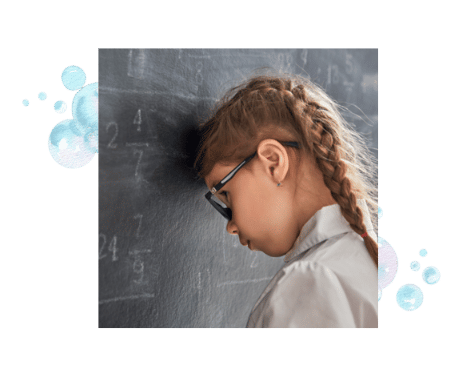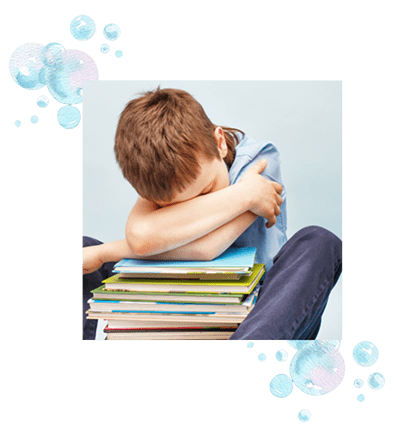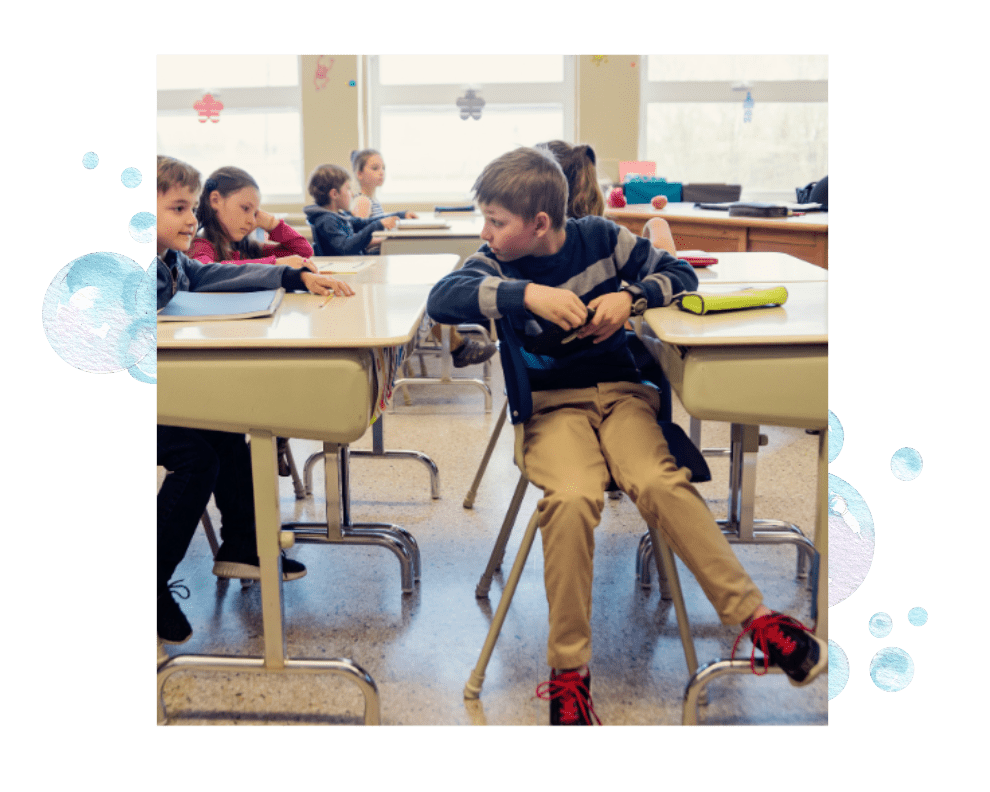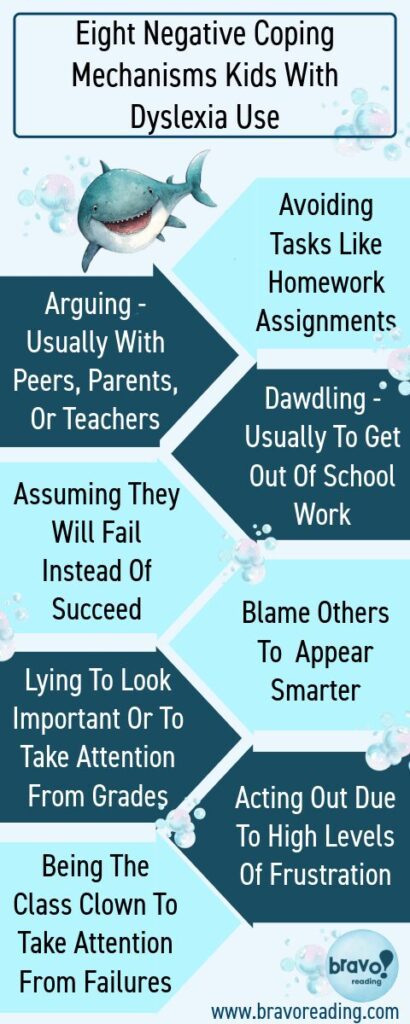Is It Coping With Dyslexia Or Survival?
Dyslexia is a common learning disability that negatively affects the ability to read, write, and spell. Children with dyslexia struggle with these skills every day, which leads to frustration, anxiety, and a sense of inadequacy. Coping with dyslexia can be difficult, often causing a host of negative behaviors.

Because children with dyslexia are bright and usually verbal, they’re painfully aware that they don’t stack up next to their peers academically.
As a matter of fact, one of the symptoms of dyslexia is normal or above normal intelligence. This is both a gift and a curse. It’s a gift because these kids are able to perform well in so many non-academic settings.
And it’s a curse because children with dyslexia are painfully aware of their failures in school. A chain of events follows, leading to a series of behavioral coping mechanisms as a way of dealing with emotional wear and tear.
When kids with dyslexia are given the right set of tools to succeed from the start, such as multisensory reading program like the Bravo! Reading Program or sensory learning programs, they do better! This prevents them from forming negative coping behaviors to start with, which leads to higher social status, better self-esteem, and increased learning abilities.
Coping With Dyslexia – The Eight Main Mechanisms
While some children with dyslexia develop positive coping strategies, most resort to using negative behaviors, especially if they lack proper support and guidance. These maladaptive behaviors often arise from frustration, anxiety, or the fear of failure.

Although negative coping mechanisms might offer temporary relief, they can worsen a child’s emotional well-being and academic performance over time. Recognizing these patterns is essential for parents, teachers, and caregivers. This will help them intervene early and provide healthier alternatives.
Many children with dyslexia cope by avoiding activities that involve reading, writing, or spelling. They may claim to feel unwell, procrastinate, or express disinterest in schoolwork. This avoidance helps them escape the stress of academic failure temporarily but can lead to falling behind in class and missing key learning opportunities.
Over time, the fear of these tasks only grows, making it harder to re-engage. In addition, by avoiding the task – usually schoolwork or homework – kids with dyslexia are spending time away from learning instead of being actively engaged in important school activities.

Another negative coping mechanism that kids with dyslexia often engage in is arguing. They might bicker with parents, peers, teachers, or caregivers. Usually, the goal is the same – to wiggle out of doing an assignment or some form of schoolwork when fussing with adults. With peers, the goal is to come out on top, to look important and build self-esteem, although this rarely works.
The third negative coping behavior these children try is dawdling. Once again, kids will drag their feet to get out of assignments. They might go to the bathroom and take thirty minutes or more. Or you might ask your child to get dressed and after an hour, pajamas are still worn. The list goes on. The big problem with dawdling happens when it becomes a habit. All too soon, the child with dyslexia will waste time over almost anything, not just school assignments. Once dawdling becomes the norm, it’s difficult to break the bad habit.
Internalizing The Struggle of Coping With Dyslexia
Some children internalize their struggles and begin to see themselves as not as smart as others or incapable of learning. This negative self-talk becomes a coping mechanism, protecting them from the disappointment of trying and failing.

However, these beliefs can take root, leading to chronic low self-esteem and a reluctance to engage in new challenges. Without intervention, this mindset can persist into adolescence and adulthood.
Blaming others is another huge coping mechanism kids with dyslexia regularly engage in. They do this because they don’t feel as smart as their peers. For instance, a child with dyslexia is most likely fully aware that grades are low.
When the teacher asks the child to read, the child might suddenly point to another student and accuse that student of cheating, go to the bathroom without asking, or eat a snack at a time when that’s not allowed.
All of a sudden, the attention is off the dyslexic child’s poor reading skills. Obviously, blaming others for something doesn’t make the child popular, and this creates another set of problems.
Disruptive Behavior Takes The Focus Off Academics
Lying to look important is a similar coping mechanism. Once again, if a child boasts of being the first-place finisher in that weekend’s foot race, the top soccer player, or the best gymnast, then everyone is righteously impressed.

Those poor reading and spelling skills suddenly don’t seem so bad – at least that’s the intention. All too often, though, parents, teachers, and peers see through the dyslexic student’s lies and will often call the child out on it. This creates a lot of friction instead of helping the child overcome learning issues!
Some children use disruptive behavior as a way to deflect attention from their learning struggles. Acting out in class—such as talking out of turn or becoming defiant—can mask their difficulties and shift the focus away from their reading challenges. Unfortunately, this strategy often leads to disciplinary actions, which can further erode their confidence and create a negative cycle.
Dyslexia And Negative Behaviors
Finally, kids with dyslexia will often resort to being the class clown. Obviously, by making everyone in class bust up with laughter, the attention is off how poorly the dyslexic child is performing academically.

It also increases social status with peers, as everyone wants to laugh. Unfortunately, teachers don’t usually appreciate the classroom disruption, so the child ends up getting in trouble. This just adds to the entire negative behavior cycle.
Negative coping mechanisms can provide temporary relief but ultimately hinder a child’s development and well-being.
By recognizing these behaviors early, parents, teachers, and caregivers can guide children toward healthier strategies, ensuring they receive the support needed to build resilience and thrive.
If you have a child who struggles with behavior issues because of dyslexia, try the Bravo! Behavior Booster. It’s completely free and gives you and your child an easy blueprint for positive behavior changes.
An Info-graphic About Coping Mechanisms And Dyslexia



